Above: Leica M6TTL with 28 Elmarit 2.8
Above: Leica M9 with 50 Summicron f/2
Leica M6 to a Leica M9 by Adam Marelli
Setting Our Differences Aside
Change can be challenging, especially with tradition at its back. The newest interpretation of the M line shares the same genes of its ancestors, but has a different way of expressing itself.
When things are going well, why make a change? In Leica’s case, things were not actually going that well. Kodak discontinued its epic Kodachrome film, some camera shops canceled orders for new film, and an era of film photography appeared to be drawing to a close. The fate of Leica film cameras was predicted by many people to be sealed. In an ironic twist of fate, Leica’s full frame digital M9 created a resurgence in film, film cameras, and film sales. This massive contribution is the accidental by product of creating a digital camera that feels like its film predecessors.
When the M8 was announced, I was not amazed. It was an over priced imitation of an M camera with a reduced sensor. People I met, who knew still shot film, could not help but asking, “So what do you think?! M8?” Leica was taking a step in the right direction, but they still needed some time to grow. Fast forward to the release of the M9 and a sigh breathed across the rangefinder community that at last a comparable alternative to our film cameras has arrived.
Many of the M9’s features, are like an inside joke, only making sense in context. The detachable base plate, soft release, and manual dials originated over 50 years ago. The roots of Leica’s film cameras are deep, very deep. So when I got the call my M9 was in stock, I could not wait to see how much re-learning needed to be done.
x 0.58 finder
In hand the M9 feels like a film camera. The body is slightly thicker than the M6 I use and there was no film advance lever to rest my thumb on. Since there is no film, the film rewind button was also missing, giving the M9 a minimal feeling. Holding the camera up to my eye, the viewfinder has a tighter magnification than I was used to. x0.58 is the viewfinder I prefer, mostly because I shoot a 28mm lens. With the lesser magnification, the 28mm is much easier to compose because the frame lines are visible without having to look around the edge of the viewfinder. The M9’s x 0.68 finder pushed the 28mm lines back to the edge of the scene. This was going to make for a little learning curve when using the 28mm.
Meanwhile the 50mm was perfectly suited for the new viewfinder. As a personal trait, I will admit to resisting convention. Leica has paired their 50mm Summicron with their cameras for years in the “Starter Set”. This lead me to try the 21mm and 28mm as my everyday lens. Over time the 50mm Summicron kept sneaking its was back on to the camera, until I conceded. It is a brilliant lens and a focal length that any camera sommelier would select for a successful pairing. It spends most of its time on the M9.
Shutter Dial
– The “A”
I found a large A on the shutter dial of the M9, which promised to give automatic shutter speeds. Having only used an M6 the A feature, which is available on the M7 seemed interesting. I was super excited to try out this new option, which allows you to meter a scene, press slightly harder to lock the reading and then recompose the shot if necessary. It was the closest Leica has ever come to automatic features typically found in DSLRs.
When is it useful…
Walking around cities, waiting to catch some instant moment, I leave the camera on A, set my aperture to 4.0 or 5.6 and feel ready to fire. If something comes up quickly a picture can be taken without thinking, just focus (or pre-focus) point and shoot. It is wonderful.
– 8s, 4s, 2s
Like a godsend, the M9 comes equipped with a self timer (2 or 10 seconds) and exposures on the dial all the way to 8 second. In “A” the shutter will stay open for up to 4 minutes but I prefer to use “B” and a cable release for these situations. The dial settings, of multiple seconds, adds a level of precision to what used to be a tricky task of counting in my head.
– When is it useful…
The difficulty of long exposures is not moving the camera while pressing or releasing the shutter. A cable release allows for a movement free release, but what if you left it at home? By using the self timer and the multiple second presets, low light pictures are infinitely easier with the M9.
Select self timer.
Set the length of the exposure.
Press the release.
Brace the camera for the exposure.
Hold tight until the picture is complete.
Around the World
The added features of “A”, 8s, and faster speeds like 1/4000 make for a very full dial. Leica managed to squeeze all these settings on a dial the same size as an M6 dial. The trouble is, how do you tell what the setting is when you are not looking?
The M6 dial has a few indicators that allows you to know where the setting is without looking. The “Off and B” and “1/30, 1/50, and 1/60” are spaced closer together than the other settings. For example, if the dial is set to 1/125th and the scene you are looking at is dark, as the dial is rotated to longer exposures you can feel a double click as the dial passes over 1/50. Its a great way to know that holding steady is very important. Since the M6 dial stops at the “Off” and the 1/1000, its easy to tell what shutter speed you are on without looking.
The M9, on the other hand, spins 360 degrees with half steps between each shutter speed. In the M6 days, half steps were only possible in the aperture settings, not in the shutter speeds. So if a scene was half a step off, you had to change the aperture to get the right setting. The added feature is welcomed, but now its impossible to tell the shutter speed without periodically at the camera. Its not a big deal, but it takes some getting used to. When I go back to the M6 its nice to know where I am without looking, but I miss the additional settings. (Moral of the story: Owning more than one Leica is fun. They all have their strengths and weaknesses).
Base Plate
The day I picked up the M9, my immediate thoughts were to open everything up and see how it compared to the M6. When I tried to remove the base plate, there was no catch. Leica put the opening mechanism on the other side of the camera. The new battery position of the M9 is where the old catch used to be on the Leica’s earlier M cameras. Fortunately the M9 base plate does not need to be removed as frequently as a film camera. Instead of 38 images, an 8 GB card usually allows for 422 shots.
The other adjustment Leica made was putting the tripod thread in the center of the base plate. Traditionally the tripod threads were on the right had side of the camera. When I transitioned from a Hasselblad to a Leica, I thought this was a strange place to put a threaded attachment. It meant that the camera was asymmetrically balanced on a tripod. With a full size tripod this makes almost no difference, but when using a table top tripod you must be careful otherwise the solid M body will tip over a light weight tripod. Over the years, the right handed threads proved to be useful. Whenever I would use the tripod against a wall, instead of on a horizontal surface, the M6 would be cantilevered away from the tripod, giving my face plenty of clearance to compose and image.
The M9, has centered itself, both literally and figuratively to some of the trends of modern DSLRs, namely a centrally located tripod thread. This allows the camera to balance on a tripod. With this small change, Leica has eliminated two problems. Number one, the camera does not pull the tripod off balance by being cantilevered out in space. Number two, when the ball head is released the lopsided camera does not drop out of position. Obviously if the ball head is completely loosened the camera will drop all the way to once side, but with the threads in the center of the camera, smaller adjustments are easier.
Exotic coverings for cameras never attracted my attention. The idea of having some nearly extinct animal wrapped around my shoes or camera does not appeal to me. This is not my rant on animal rights, but I figure, I eat beef. There is no sense throwing the skin away, better to use it. Recently I noticed that Leica said their ostrich covering was not actual ostrich. Good news I believe.
The M6 comes with a standard black leatherette wrap, identical to that found on the M7. It is smooth to the touch and very durable. My camera was built in the 1993, was bought used, and still looks new. On the M9, Leica decided to offer the black camera with the traditional vulcanite wrap used on M3’s. It gives the newest addition to the M line a retro look. For those who do not like the textured feel of the vulcanite, the grey M9 has the smooth leatherette cladding that you will recognize from the MP’s. Vulcanite is a heavily textured mixture of silicone mixed with latex. There was some criticism on the internet that vulcanite was inherently unstable. UV rays supposedly cause it to break down and turn to dust. I trust Leica has solved this issue before wrapping a few thousand M9s in vulcanite.
Beyond the chemical properties of the wraps, I am not partial to one over the other. It is helpful having the M6 and M9 with different finishes. This way their “feel” of the camera is obvious from the first second I pick them up. If I could ask Leica for my ideal camera covering it would be the suede side of way ward calves leather. Andy Warhol once had the Parisian shoe designer, Olga Berlutti, make him a pair of shoes. When she asked him what type of leather to use, he wanted the skins from cows that were rejected from production for inconsistencies. As a result, his shoes were imperfect from the beginning. This is consistent commentary made by the man obsessed with repeating the same picture, slightly different every time, imperfections and all.
ISO
Most photographers who shoot film stick to a handful of film speeds, manufacturers, and film types. My M6 is usually loaded with Fuji Provia 100 slide film. Its a great all around travel film. The color saturation is strong, but not outrageous. Its grain is small due to the relative slow speed of 100 ISO. And per roll Provia 100 ($6.99 per roll) is more cost effective than Provia 400x ($10-$14 per roll). There are occasions where I would prefer to shoot higher speed films, but the draw back with any film camera is, once the film is loaded there is not much wiggle room to change film speed.
Enter the M9. The setting with the highest dynamic range and color saturation is 160 ISO. This is familiar to my brain and helps me estimate exposure when I need to set up for a shot without using the cameras meter. I tried using the “A” setting for a while on the M9, but I just don’t like the metering lock enough to use the feature. Using the shutter manually is just my preference. It does not mean you should do it too. Use whatever system works best for you.
The flexibility of adjusting the ISO is a relief. It has allowed me to to take sharp pictures in darker situations with a greater depth of field. Unlike the popular trend of shooting everything wide open, I enjoy the challenge of creating a picture that utilizes more of the scene. Being able to bump up from ISO 160 to 640 with a quick flick of the adjustment wheel is a welcomed feature. Even at 1250 the images are surprisingly good. Initially I was skeptical and thought, I will shoot the M9 just like the M6. But by trying to aspire to the greatest saturation, I realized that I was missing pictures. Now its more fun to run wild with the ISO.
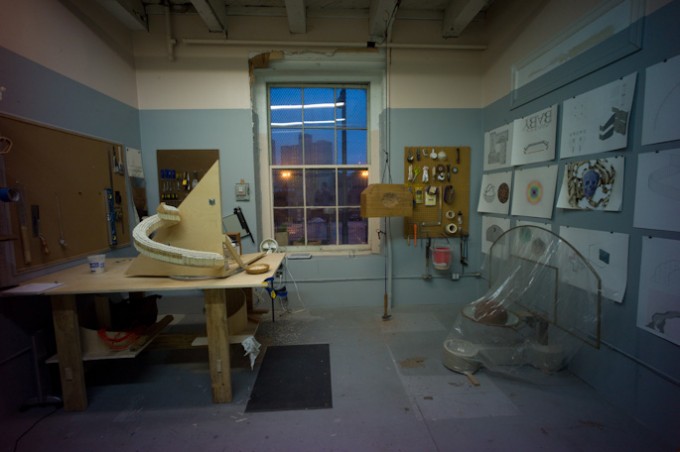 Notice the magenta around the edge of the image. In Black and White, the cast is less of an issue, but in color it requires some serious correction to eliminate the cast.
Notice the magenta around the edge of the image. In Black and White, the cast is less of an issue, but in color it requires some serious correction to eliminate the cast.
Ultra Wides
Some people have asked me, has the M9 rendered the M6 obsolete? By solving the full frame rangefinder dilemma while maintaining Leica’s tradition, why didn’t I sell the M6? Now this can be a difficult conversation to have with someone who has never shot film. Without explaining that film images look different than digital and that the experience of shooting a film camera does not compare to shooting in digital, there is still one area where the M9 cannot compete with the M6, Ultra Wides. The Voigtlander 15mm is not my everyday lens, but when I need it, nothing else does the job.
Because of the close distance between the back of the 15mm lens and the M9 sensor, the peripheral light rays to not make proper contact with the sensor. To explain why that would occur, I will let Erwin Puts explain it. He is much more qualified than me. But, the results of a rear element being too close to the sensor means that the corners of the image go magenta, REALLY magenta. It can be corrected in post production, but it is strong enough to keep me from using the 15mm on the M9 with any frequency. Ultra Wide lenses like the Voigtlander 12mm and 15mm Heliars perform much better on film cameras. Since the 15mm requires and external finder, I leave the M6 set up for wide angle, while I rotate my 28mm and 50mm lenses on the M9.
Conclusion
For those of us who are used to shooting film, the transition to an M9 is easy. It looks and behaves like a film camera with a few bonus buttons. Picking up an M6 after weeks of shooting the M9, is not too shocking. Leica pulled off a remarkable feat, by making a new digital camera that retained almost everything their photographers have enjoyed since the 1920’s. That doesn’t mean its a flawless camera and there are not improvements that could be made.
Like most Leica cameras, it comes with its eccentricities. It will not convert millions of Canon and Nikon users and is by no means the “Best Camera Ever.” That, aside from being a profoundly inaccurate statement, implies a hierarchy that does not actually exist in photography. All cameras, in every format and at every price point, come with their pluses and minuses. For me, Adam Marelli, at this moment in time, it IS the best camera ever. Will this change? Sure, but in the mean time, it is doing its job supremely well. Thank you Leica.
BTW, the M9 is currently available from DALE PHOTO, Ken Hansen and B&H Photo! My most trusted sources for Leica gear!
[ad#Adsense Blog Sq Embed Image]

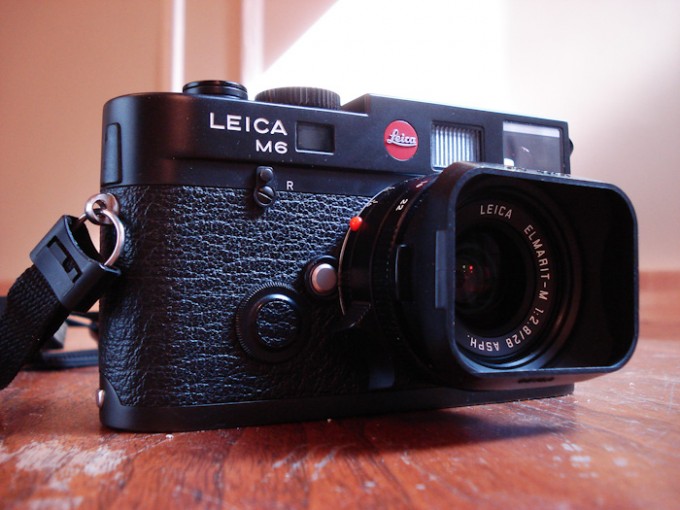
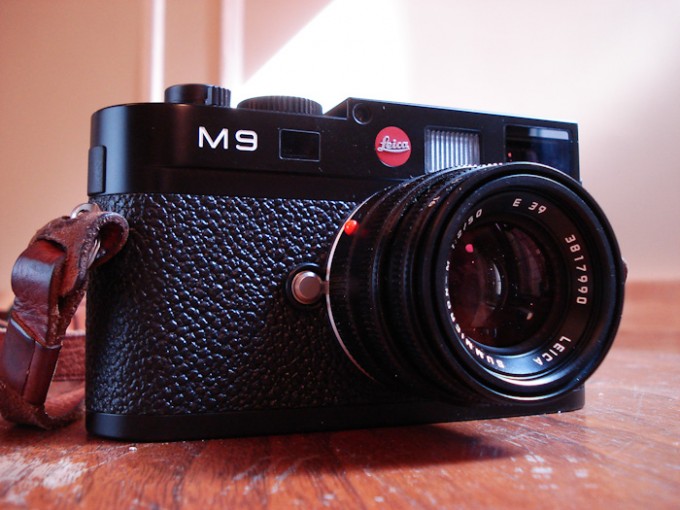
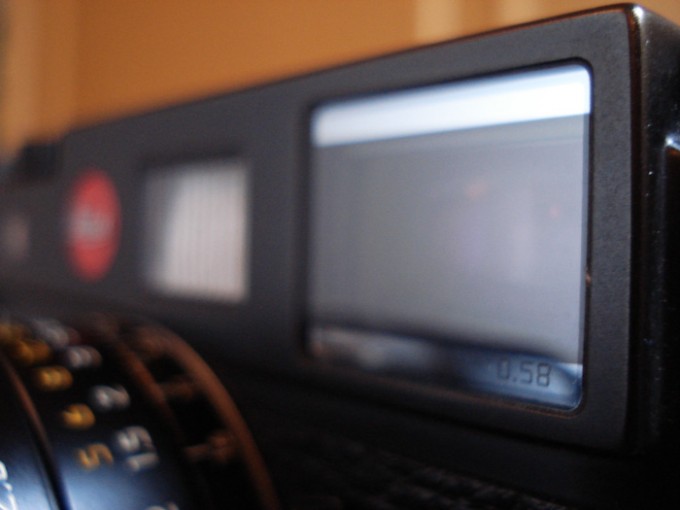
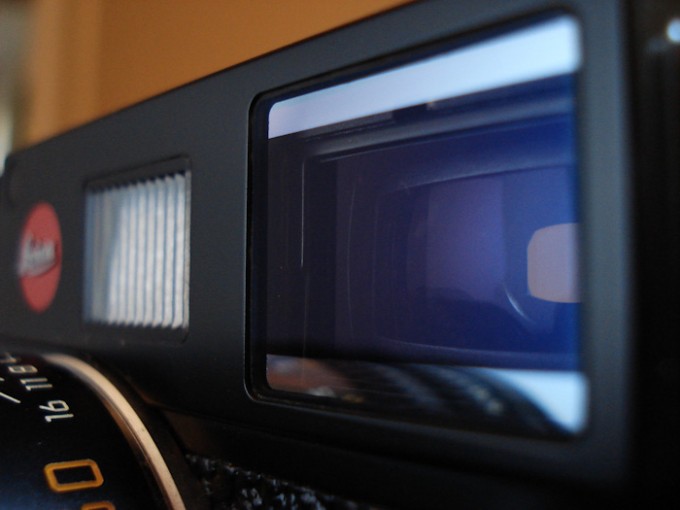
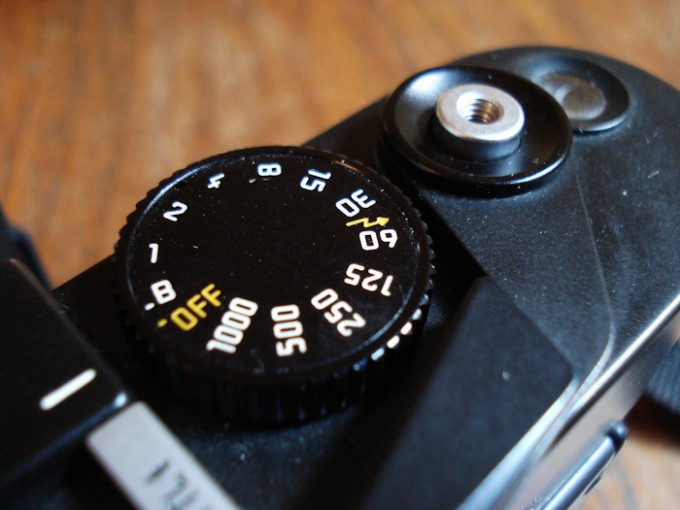
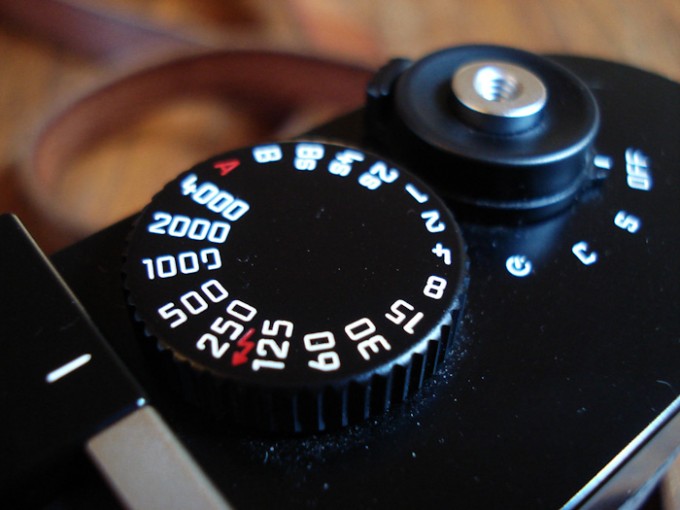
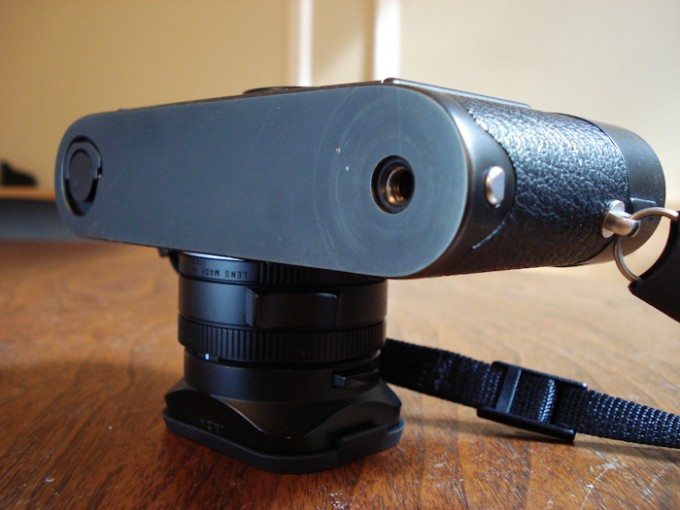
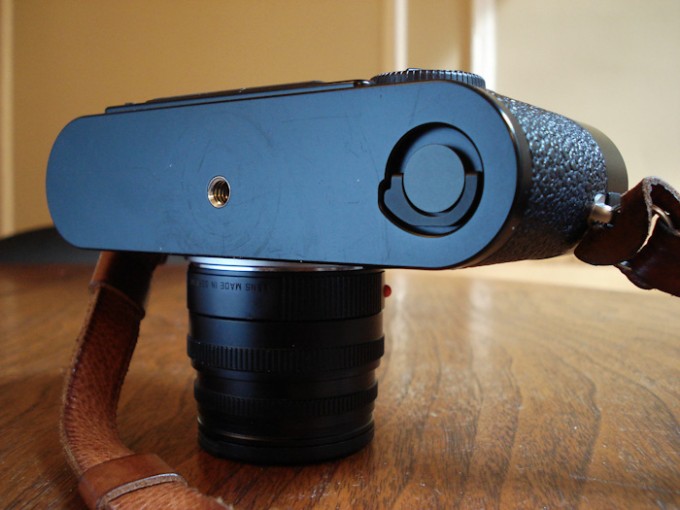
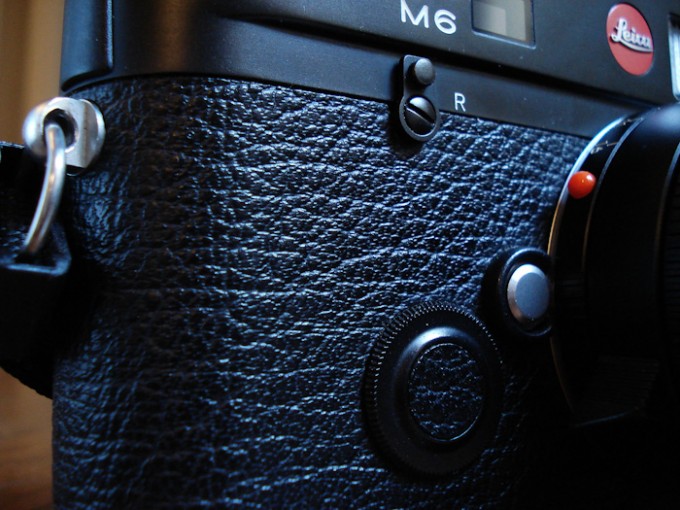
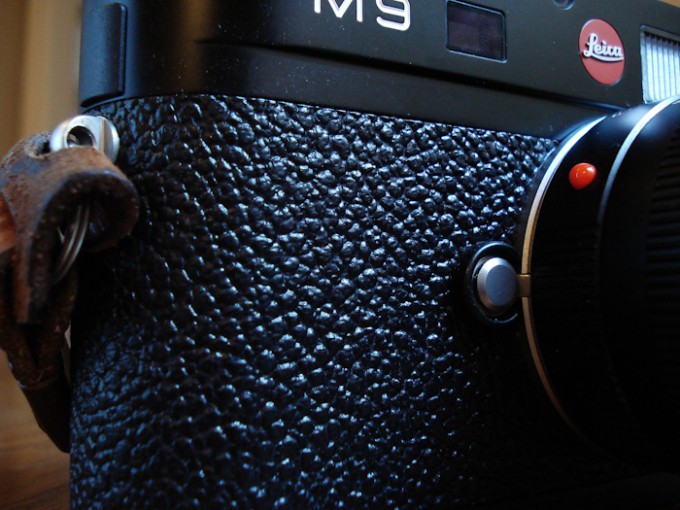


I’m lazy and impatient, which is why I love digital. LOL! I’m also very critical and an artist, which is why I love film. I think this world has room for both. The ultimate would be using a film M and a digital M. Check out the new LFI magazine. There is an article on that exact topic. The article features Johannes Barthelmes and his pictures from different countries, taken with both mediums.
Shameless plug, if anybody here is interested in my earlier work … please see LFI 6/2008.
More current work can be found in this years Applied Arts Awards Annual (Photography and Illustration), and also in Communication Arts’ Photography Annual 50.
(Stephen B … how’s that for a shock?)
Thanks Gt. Harald, just to be clear, I am not suggesting that a photographer can’t be great and use digital, of course they can be, and are. It’s just that very often, when people have an easy option, they tend to take it. It’s a human nature problem. There are some that resist the temptation but I would venture not many. Delayed gratification is in my opinion one of the corner stones progress and the quicker and cheaper results are, the less thought goes into them. A good photograph is one you keep. Ratio wise, I think people who shoot film keep a lot more photos. Logically, this means they take more good photographs than bad. Ratio wise, digital shooters take more bad photographs than good. If you don’t believe me, count how shutter actuations you have on your camera and compare that to the photos you have uploaded to flickr/your website/blog. I think you might be in for a shock. I accept this may not apply to everyone but I bet it is true in the main.
I think it’s time to differentiate a little. There are many kind of photographers out there. There are some that point there p&s, dslr or iphone camera at absolute everything that moves or doesn’t move quick enough.
No matter how many “keepers” they produce, they are having fun and that’s the only thing that really matters. So, who cares how many photos should in fact go straight into the garbage? Nobody.
I’m sure I’m missing a few different species but let’s move on to the serious amateur photographer. As better and more expensive the equipment gets as more pride and respect enter the behavioural equation. For the dslr crowd, carrying around the big guns is like being a decorated hero. Listening carefully one can literally feel the “I am Pro” sizzling in the air. Mighty words, spoken with the legendary Austrian accent. (Thanks Arnold.)
Interestingly, the equivalent to that in the Leica world is using inconspicuous looking film.
In opposite to the dslr rites of prohood there’s no need for any kind of phallic objects to show one’s superior status to fellow, yet lesser, digital Leicaphiles. No sire, no such vulgar things in the elegant world of Leica.
Yet, photographer beware! Don’t be fooled by the rich tradition and all the glamour surrounding the brand. In the hands of a truly experienced Leica shooter an analog film M becomes the preferred weapon of a sniper. Loaded with a bullet of film he’s firing off 36 rounds … erm, frames … with deadly precision, making every last single shot count.
Alright, enough drama. I guess, you and everybody else here gets my point.
Besides, it doesn’t really matter if you have more keepers with film or if delayed gratification is the secret to orgasmically good photos.
To each and every of your pro film arguments there’s a contra that is as viable.
What it really comes down to is A. choice (and be happy there is still the choice to shoot film), and B. joy. Not matter what you use to take photos with, as long as it gives you joy doing it all is well in the wonderful world of photography.
I for one love the constant stream of Leica M9 articles. Each person has a different view or spin on them – and it’s always enlightening to know an additional quirk or functionality – keep ’em coming.
A suggestion I did like though is the idea of reviewing older film Leicas and associated lenses.
That’d be sweet!
Thanks, and there will be some older film Leica articles soon. There was one by Max on the M3 a while ago but there will be more.
thanks Adam, quite possibly the best article I have read with regards to the LeicaM9. Love your Blog.
Thanks Kiwi! : )
I second that I’d like to see more non-Leica news/reviews, sometimes it feels like this site could be renamed to imovedfromsomethingelsetoleicam9.com. Of course Steve is free to feature whatever he likes, that is the beauty of running an independent site.
@John G
Why does shooting film make one a better photographer? Because it is more finite (36 per roll), more expensive (at least in a shot by shot kind of way – 36 shots divided by say $10 for the price of the film and developing is 27 cents a click) one thinks more before ‘wasting’ a frame. There is no tangible loss when one wastes a digital frame and as they say, to learn something, it must cost you. I guess it is a human nature thing. People also crash less when driving their car compared to when they are driving a simulator – why? Because there is no real penalty for loss of concentration and people concentrate less when there is no penalty. Ever fallen asleep in the passenger seat while a mate is driving a long distance (even though he asked you to stay awake)… why? No penalty. Film carries a penalty for failure, a real, tangible one.
I know the whole argument of digital rot and that digital cameras cost more in the long run vs film but we just don’t feel that when we shoot day to day. We do however feel the effort of buying film, of developing it ourselves or having it processed (and paid for) and all the scanning etc and this is what sharpens us up, forces us to think and makes a film photographer, a better photographer… at least in my opinion anyway 🙂
OMG, do you actually believe the cr@p you are writing???? You got to be kidding.
Yes, shooting film makes one likely more selective but that does not mean it makes one a better photographer. If that would be the case I wouldn’t touch my camera for a month and rather think about the photo I could be taking.
Using a digital camera doesn’t mean to turn into a machine gunner. One should still engage their brain before pressing the shutter.
Hey Harald, you may not agree with Stephen, but it would not kill you to be civil about it. I tend to agree with Stephen to an extent, but I also respect your opinion that shooting digital does not force you to shoot like a machine gun without thinking.
The only thing I will say is that sometimes shooting film can make you *seem* like a better photographer as often when people see that grainy high contrast film look, they think “art”. But if you achieve that effect with Silver Efex Pro or something, then you’re “cheating”. Same sort of thing for slide film, the colours look awesome right away, but if you achieve it in Photoshop with a RAW file, then again, it’s “cheating”.
Oh boy 🙂 I can just see where this is going with Harald..
Using digital filters is not cheating at all..it is simply called something else: Digital Art. When you take a color film image, you are very limited to what you can do with it. Yes, you can color balance C41, cross process, tweak a few things, BUT a digital RAW file can be manipulated to death into millions of different possible images. I don’t call that photography, I call it Digital Art, or Photoshop Art, whatever. Nothing wrong with it, per se, just a different animal.
When I shoot transparencies (Kodachrome, Velvia, etc) I either nail it or I don’t. There is no fixing exposure, recovering highlights later, nothing. Does anyone think the approach is the same? I am not saying that one is wrong and the other one “correct”, but again, different. You can bet your nuts that any transparency shooter is a lot more careful before tripping the shutter than ANY digital shooter. That’s just reality. And that is the reason that 99% of the digital images on your (meaning anyone’s) hard drive should WITHOUT A DOUBT be deleted.
As far as black & white, the interaction between the emulsion/developer and silver gelatin papers cannot be emulated/replicated by converting digital RAW images. Just not happening. They are simply very vague approximations and nothing more. When someone replicates the look of a roll of Tri-X exposed @ ISO100 and developed in Rodinal 1:25 for 10 minutes with agitation every 1 1/2 min, please let me know. Again, I am not debating whether one system is better than the other as it’s all a matter of taste. What I am saying is that they are different animals, and that cannot be disputed.
Max my friend guess what, I agree with you.
Well, to a degree but generally speaking you are correct when saying that film and digital are two different animals or i as I like to say, two different mediums.
I like film as much as you do but I like digital as well. Each one for different reasons.
The thing that gets me going is this ‘belief’ that film is in opposite to digital so very pure and unaltered in its form.
Or as you say “When you take a color film image, you are very limited to what you can do with it.”
To be clear, I am using your words as a general example and not because you said them.
This is simply plain wrong and has absolutely nothing to do with reality.
No offence to anyone but just because an amateur (or call it a hobbyist) doesn’t know what was possible with film in the professional world, doesn’t mean it never existed.
Heck, there was an entire industry that did nothing else but “fake” photos. I am speaking out of experience here.
Please don’t think either that a pro in film days was more careful and selective when shooting than he/she is now with digital.
While an amateur/hobbyist goes about a shoot with 3, 4, or let’s say for argument sake 10 rolls of film, the pro had a fridge full of the film of choice at their disposal. Alone the amount of rolls that were sometimes used simply for clipping tests could easily cover the amount of a month worth of film an amateur would carefully go through.
Please stop finally talking about film as if it was/is something holy and pure as a virgin. That’s simply not the case. period.
I may be nit-pickin’ but, how many of you good people who are tempted to buy an M9 notice that the red Leica badge on the M9 – the second comparison photograph in this article has not been stuck onto the camera properly – its not straight. I don’t know about you, but I call that kind of lack of attention to detail ‘assembly sloppiness’. Its unforgivable for such an expensive camera and makes me think – ‘well, maybe they were sloppy in the assembly of other parts of this camera…hmmm’ 🙁
Art 4 Education,
The crooked label made me crazy at first. I was like WTF? Where is the quality control Leica? My plan is to get it reset with when I send it back for a cleaning next spring.
You are right though, its just a stick on tab, someone should have seen this before they sent it out. I know some people have had rangefinder issues and sensor issues too. But the inner workings of the camera have been spot on. And I got it completely soaked once and it dried out without a problem. I would never do that again, but its nice to know it did not quit on me.
Leica customer service? Are you guys out there?
You can easily fix that yourself. Press your thumb onto the red dot, give it a moment to transfer some heat and than start to move the button to the left and right. It will take a couple minutes but will get easy quickly. Once you loosened the adhesive tape on the back of the red dot enough, it will come out easily. Get rid of the remaining goo, put some new double sided, adhesive tape on and reposition the button correctly.
A faster method is to cover the darn thing with some black gaffer tape.
Thanks Harald! I will give it a go.
It’s very easy to fix – but that’s not the point. And of course a company badge badly attached to the body has zero influence on the quality of the camera’s picture taking ability. If we were talking about a cheap product, then it really doesn’t matter. However, the M9 in not a cheap product at all. It is a camera that is being sold for $6995 (today’s Amazon price – body only) and in my opinion at that price, we have the right to expect the camera to be perfectly assembled and in perfect working order before it gets anywhere near a customer. A customer should not have to fix this at all, even if it is simple to fix.
Boohoo. I’d agree with you if that red dot would be something essential but since it doesn’t change anything on how the camera performs I couldn’t care less about it. I’m sure other photographers who purchased expensive pro gear from CaNikon and Co. are experiencing from time to time screw-ups far worth than this one.
I don’t go with the crowd who suggest there are too many M9 reviews. There are not enough in my opinion, but maybe there are are enough of the hardware. What I’d love to see is more about shooting with the M9, it’s shortcomings, it’s workarounds, it’s post processing nightmares and opportunities.
Why doe users persevere; why do they give up; what makes them turn back to film; what makes them sell the camera? Do users give up on colour and slip back to B&W? Do they adopt it for their work? Have they been surprised,; pleased; disappointed? Has it changed their lens mix and in what way? Have they found the M9 was an addition to a dslr setup, or a replacement and why.
We don’t need to be told that the tripod socket has moved, but it’s interesting to know that the camera doesn’t fall when fitted to a table top tripod, etc etc.
Hey Fernando,
Glad to hear you enjoyed it. The view finder of the M9 has me seriously considering a 35mm. The increased magnification makes shooting a 28mm tricky.
And I know it seems like a silly detail that the tripod socket moved, but I was so happy it did. The offset tripod thread nearly sent my M6 tumbling down a flight of stone stairs.
Quite a nice article, shame it was about the M9, which I’m sure is awesome, but has been done to death a bit.
I’d like to see a few more articles on film cameras, the Bessa, second-hand Leicas, and other, more affordable cameras. Maybe review those $200 ancient Elmars or Serenars on eBay, something that normal people can get their hands on.
The M9, for many of us, is just way, way, out of reach, or even if it isn’t, is in the same bracket as a Rolex or a Vertu mobile phone, just an expensive trinket.
Steve : It’s your site, do what you want with it, but I find myself migrating back to Ken Rockwell, which can’t be right 😉
Sorry Steve, another M9 story? While I like the site and know you’re sort of a Leica fanboy (no offense intended) even as an occasional reader I have not gathered any new input from this article. Aren’t there enough reviews on the product already? The conclusion section would have been absolutely sufficient a read.
What are people’s thoughts with shooting the m9 in compressed (8 bit) vs uncompressed (14 bit?). Ares thee any good thoughts or hard data out there about any benefits to the latter?
For the naked eye there’s no difference between compressed (8 bit) and uncompressed (14 bit) files but that doesn’t mean there is no difference. Far from it.
14 bit files are a lot more robust in post and make for a better quality file in the end (print and such).
I believe that the magenta on ultrawides only happens because Voitglander lenses aren’t coded. If Leica lenses (with 6-bit codes) are used the Leica M9 compensates…
Interesting points Adam M. I would say though that the film loving M shooters are going to say that it is film that keeps the M6 in the game rather than the m6 being the last bastion of hope for the ultra wides. Many people shoot their film Ms while their M9 sits in the cupboard gathering dust and this is not because the dial is different or the tripod thread location or viewfinder magnification is different. It comes down to film, its look and how it makes them better photographers. To conclude, great article but I would add the caveat that if you must shoot film, ignore all of the above. 😉
Thanks Stephen,
You are absolutely correct, if it must be film, an M9 is not the way to go.
Its kind of like the white wine/red wine dilemma. Somedays its M6 other days its M9. I am grateful that there is a choice.
How does film make someone a better photographer? I’ve used both extensively and cannot figure out why…
It doesn’t. Film guys only wish it would.
@John G: On one hand film makes you more careful about shots, as you can’t chimp and each shot costs money. On the other the no-cost approach of digital means you can practise so much more and see the results of your efforts right away, and associate what you did with the result much more quickly. Which makes the bigger difference in terms of learning to take photos probably varies from person to person.
Interesting points Stephen 🙂
Hey there Adam – well written and thank you for posting it. I found the ultra wide segment particularly interesting (with that magenta cast issue). I wonder, does the M9 do the same thing with the WATE at 16mm? Is anyone able to confirm this?
Cheers
Adam
Adam,
Never shot the WATE, though I did read that there was no magenta cast at the corners. The vignetting is what it is with super wides, the WATE is no exception. But I would hope the color is “normal.”